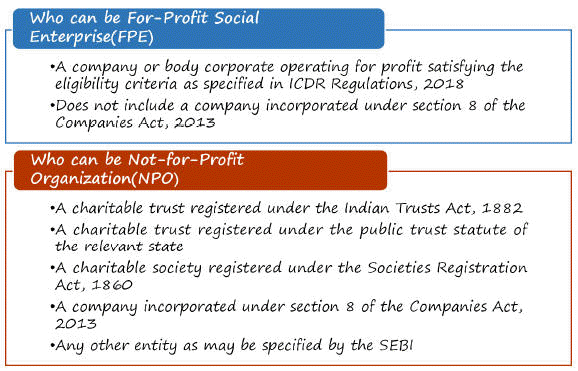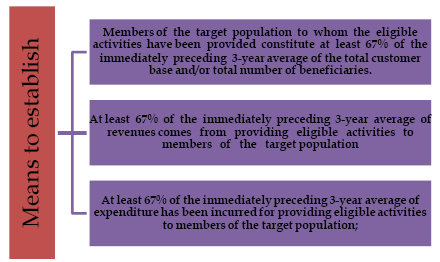[Opinion] Social Stock Exchanges | Unleashing the Power of Impact Investing
- News|Blog|Company Law|
- 3 Min Read
- By Taxmann
- |
- Last Updated on 21 June, 2023
Introduction
In the era of profit and purpose convergence, social enterprises have emerged as powerful drivers of positive change. These innovative organizations prioritize both financial sustainability and societal impact, making them attractive to investors and philanthropists. To further accelerate the growth and visibility of these mission-driven entities, the concept of a Social Stock Exchange (SSE) has gained traction in the world of impact investing. The SSEs offer a transparent, regulated and efficient platform that enables companies to raise capital for their sustainable initiatives while providing investors with an avenue to support their values.
This article provides an overview of the SSE, covering the eligibility criteria for social enterprises, the role of the SSE in facilitating listing and trading of securities, fundraising opportunities, governance, and access. By understanding the SSE, social enterprises can leverage this platform to scale their impact and attract mission-aligned capital.
1. What is a Social Enterprise?
Social enterprise means either of the following –
(a) For-profit social enterprise (FPE) or
(b) Not-for-profit organization (NPO) which satisfies certain eligibility criteria to be a Social Enterprise.
2. What eligibility criteria are required by an entity to qualify as a social enterprise?
In order to establish the primacy of its social intent, the above-discussed social enterprises shall meet the following criteria:
2.1 Prescribed activities in which Social Enterprises shall engage
The prescribed activities in which social enterprises shall be engaged are as follows –
| Social Enterprises shall be indulged in at least one of the following activities | |
| 1. | Eradicating hunger, poverty, malnutrition and inequality |
| 2. | Promoting healthcare including mental healthcare, sanitation and safe drinking water |
| 3. | Promoting education, employability and livelihoods |
| 4. | Promoting gender equality, empowerment of women and LGBTQIA+ communities |
| 5. | Ensuring environmental sustainability, addressing climate change including mitigation and adaptation, forest and wildlife conservation |
| 6. | Protection of national heritage, art and culture |
| 7. | Training to promote rural sports, nationally recognised sports, Paralympic sports and Olympic sports |
| 8. | Supporting incubators of social enterprises |
| 9. | Supporting other platforms that strengthen the non-profit ecosystem in fundraising and capacity building |
| 10. | Promoting livelihoods for rural and urban poor including enhancing the income of small and marginal farmers and workers in the non-farm sector |
| 11. | Slum area development, affordable housing and other interventions to build sustainable and resilient cities |
| 12. | Disaster management, including relief, rehabilitation and reconstruction activities |
| 13. | Promotion of financial inclusion |
| 14. | Facilitating access to land and property assets for disadvantaged communities |
| 15. | Bridging the digital divide in internet and mobile phone access, addressing issues of misinformation and data protection |
| 16. | Promoting the welfare of migrants and displaced persons |
| 17. | Any other area as identified by the SEBI or Government of India from time to time |
2.2 Targeting Underserved Population; Social Enterprise’s focus on development priorities
Social Enterprise shall target underserved or less privileged population segments or regions recording lower performance in the development priorities of central or state governments
2.3 Social Enteprise to have minimum 67% criteria for welfare activities
The Social Enterprise shall have at least 67% of its activities, qualifying as eligible activities to the target population, to be established through one or more of the following:
(a) At least 67% of the immediately preceding 3-year average of revenues comes from providing eligible activities to members of the target population;
(b) At least 67% of the immediately preceding 3-year average of expenditure has been incurred for providing eligible activities to members of the target population
(c) Members of the target population to whom the eligible activities have been provided constitute at least 67% of the immediately preceding 3-year average of the total customer base and/or the total number of beneficiaries.
Click Here To Read The Full Article
Disclaimer: The content/information published on the website is only for general information of the user and shall not be construed as legal advice. While the Taxmann has exercised reasonable efforts to ensure the veracity of information/content published, Taxmann shall be under no liability in any manner whatsoever for incorrect information, if any.

Taxmann Publications has a dedicated in-house Research & Editorial Team. This team consists of a team of Chartered Accountants, Company Secretaries, and Lawyers. This team works under the guidance and supervision of editor-in-chief Mr Rakesh Bhargava.
The Research and Editorial Team is responsible for developing reliable and accurate content for the readers. The team follows the six-sigma approach to achieve the benchmark of zero error in its publications and research platforms. The team ensures that the following publication guidelines are thoroughly followed while developing the content:
- The statutory material is obtained only from the authorized and reliable sources
- All the latest developments in the judicial and legislative fields are covered
- Prepare the analytical write-ups on current, controversial, and important issues to help the readers to understand the concept and its implications
- Every content published by Taxmann is complete, accurate and lucid
- All evidence-based statements are supported with proper reference to Section, Circular No., Notification No. or citations
- The golden rules of grammar, style and consistency are thoroughly followed
- Font and size that’s easy to read and remain consistent across all imprint and digital publications are applied









 CA | CS | CMA
CA | CS | CMA


